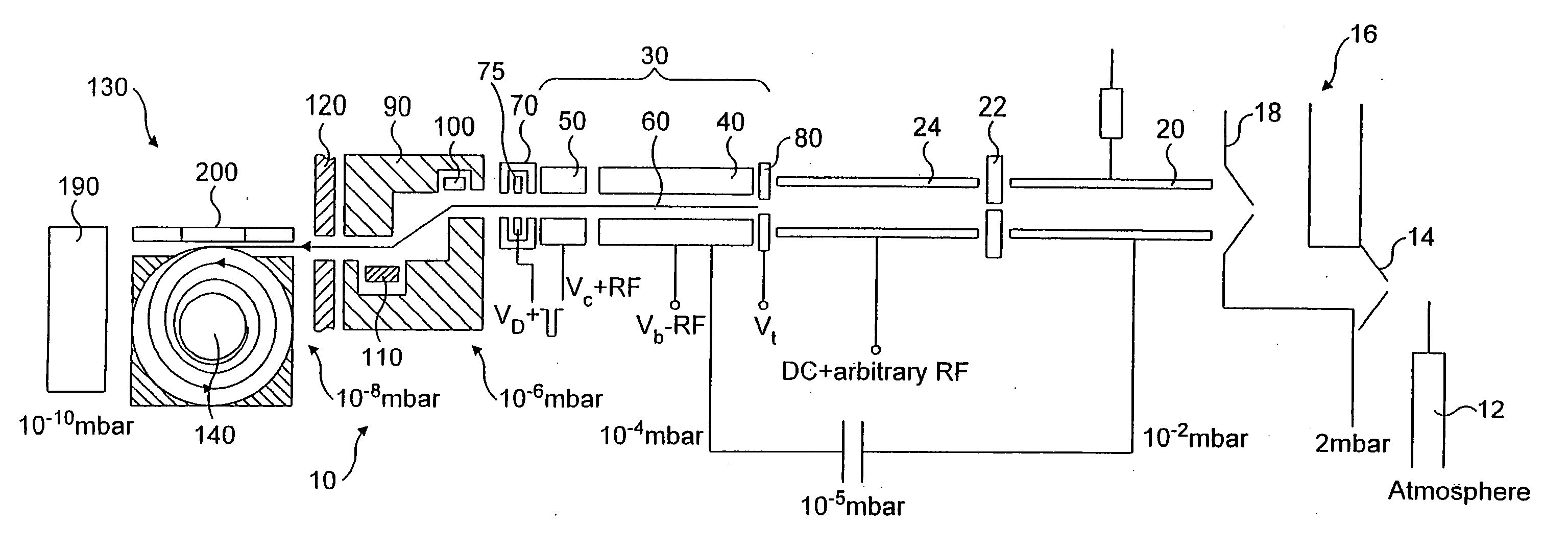Mass spectrometry method and apparatus
a mass spectrometry and mass spectrometry technology, applied in the direction of dispersed particle separation, instruments, separation processes, etc., can solve the problem of quadrupole ion traps being relatively inefficient, coupling to any external continuous ion source is a serious problem, and the space charge capacity is low, so as to reduce the amount of electronics needed
- Summary
- Abstract
- Description
- Claims
- Application Information
AI Technical Summary
Benefits of technology
Problems solved by technology
Method used
Image
Examples
Embodiment Construction
[0047] Referring first to FIG. 1, a mass spectrometer 10 is shown. The mass spectrometer comprises a continuous or pulsed ion source 12, such as an electron impact source, an electro-spray source (with or without a collisional RF multipole), a matrix-assisted laser desorption and ionisation (MALDI) source, again with or without a collisional RF multipole, and so forth. In FIG. 1, an electrospray ion source 12 is shown.
[0048] The nebulized ions from the ion source 12 enter an ion source block 16 having an entrance cone 14 and an exit cone 18. As is described, for example, in WO 98 / 49710, the exit cone 18 has an entrance at 90° to the ion flow in the block 16 so that it acts as a skimmer to prevent streaming of ions into the subsequent mass analysis components.
[0049] A first component downstream of the exit cone 18 is an ion cooler 20 which reduces the energy of the sample ions from the ion source 12. Cooled ions exit the ion cooler 20 through an aperture 22 and arrive at a quadrupo...
PUM
 Login to View More
Login to View More Abstract
Description
Claims
Application Information
 Login to View More
Login to View More - R&D
- Intellectual Property
- Life Sciences
- Materials
- Tech Scout
- Unparalleled Data Quality
- Higher Quality Content
- 60% Fewer Hallucinations
Browse by: Latest US Patents, China's latest patents, Technical Efficacy Thesaurus, Application Domain, Technology Topic, Popular Technical Reports.
© 2025 PatSnap. All rights reserved.Legal|Privacy policy|Modern Slavery Act Transparency Statement|Sitemap|About US| Contact US: help@patsnap.com



